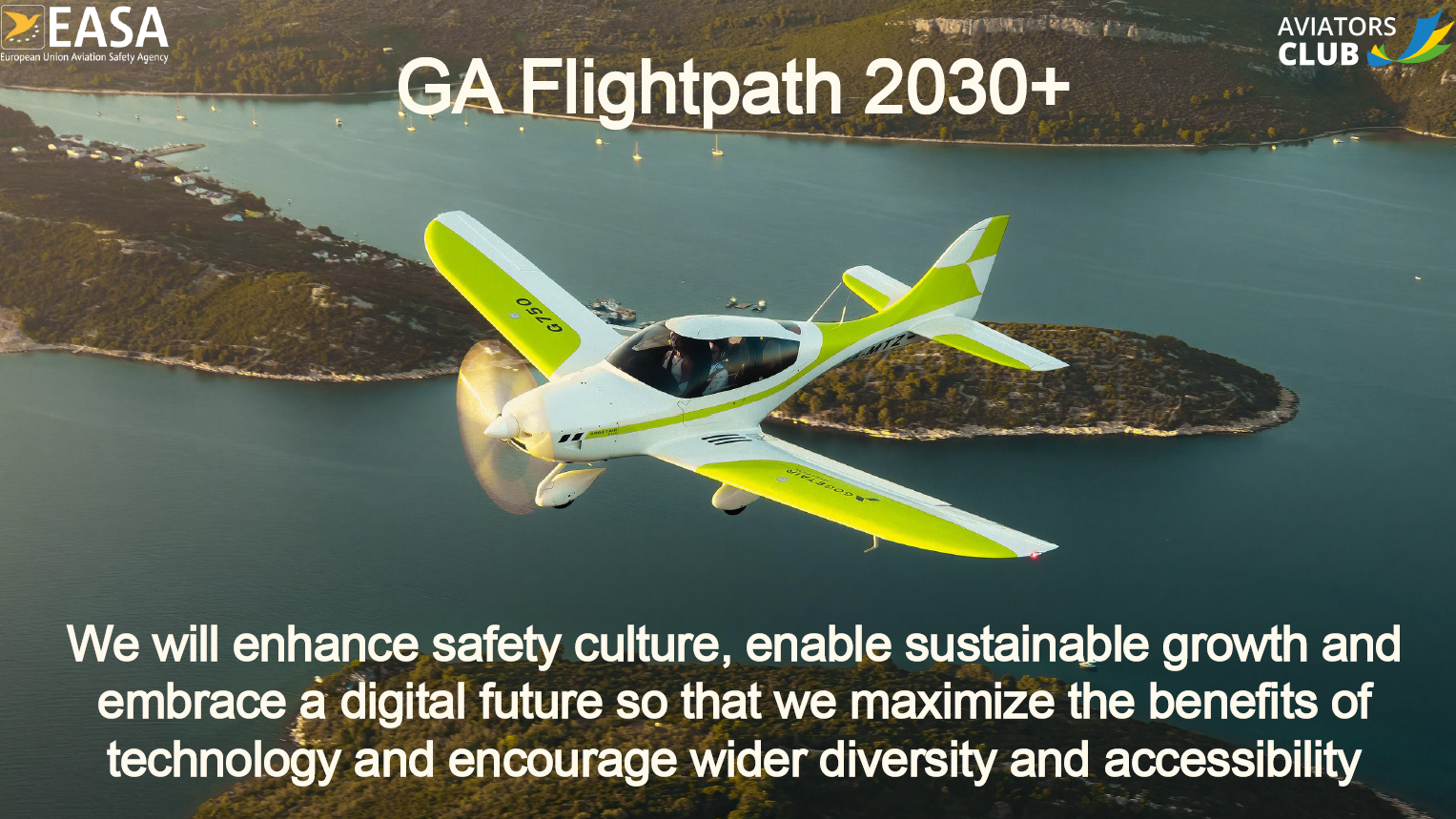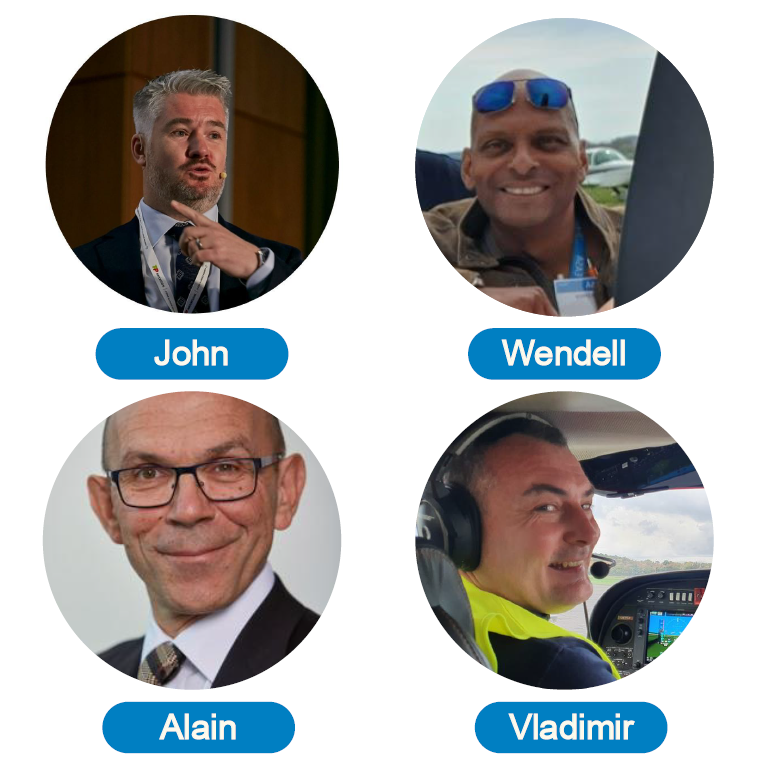It has been a number of years since EASA launched the GA Roadmap. A lot has been achieved already and General Aviation continues to be a major focus for the Agency. At AERO 2023 in Friedrichshafen EASA launched the latest phase of the GA Roadmap. It is called GA Flightpath 2030+. This article will share more about this important project.
Introducing GA Flightpath 2030+
The next phase of the EASA GA Roadmap builds on the successes that the whole GA Community have been part of so far. Through continued collaboration the goal of GA Flightpath 2030+ is this:

Before we get into the detail, it worth first provide a little introduction about the EASA team and what has already been achieved in the GA Roadmap so far.
The EASA GA Roadmap Team
It is often a surprise to people that EASA staff are really aviation people at heart. We all have a real love and passion for flying. At the heart of the GA Roadmap are colleagues from across Europe who have been involved in different aspects of aviation for many years.
Here in the picture below we highlight just 4 examples of different members of the team. The whole team is made up of over 20 specialists covering everything from design and certification to maintenance, flight crew licensing and operations.
- Alain Leroy is the EASA GA Roadmap Champion. He is the Agency's Chief Engineer and has over 30 years experience in design and certification of aircraft. He has also been a GA pilot for many years.
- Vladimir Foltin is the EASA GA Roadmap Manager. Not only is Vlado an air traffic controller with XX years experience, he is also a qualified pilot who still flies competition gliders.
- Wendell Lynch is our lead for GA Safety Promotion. He is a very active GA pilot who is also a qualified flight instructor with an instrument rating.
- Finally, as the author of this article, I am John Franklin. I was originally an aircraft engineer in the military and have spent the past 20 years in aviation safety. I have also been involved with hot air ballooning since I was 6 years old and my dad bought a share in a balloon.

What was already achieved in the GA Roadmap
The GA Roadmap started in 2014 following the EASA Safety Conference in Rome. In 2018, Roadmap 2.0 was launched to continue this important work. Throughout this time, the Roadmap has been a collaborative activities involving National Aviation Authorities across Europe and associations/ organisations from all parts of Europe covering all the different activities that make up the GA Community.
The GA Roadmap has led to many achievements and changes, the main ones include the dedicated Balloon and Glider Rulebooks, the Basic Instrument Rating, Part M Light, Part 21 Light, Declared Training Organisations, advancements in All Weather Operations and EGNOS approaches to non-instrument runways.
We have also published over 30 Sunny Swift cartoons and produced a lot of safety promotion material on this GA Community Site, which now had over 12,000 Members. The EASA General Aviation Europe Facebook Group also has over 4,000 Members there as well.
More on GA Flightpath 2030+
With the new GA Flightpath 2030+ we build on what was done already with a focus on 4 key areas:
- Safety: Enhancing safety culture.
- Sustainability: Enabling sustainable growth.
- Digitalisation: Embracing a digital future to maximise the benefits of technology.
- Diversity: Encourage wider diversity and accessibility.
From a safety perspective we still have work to do. In small aeroplanes, there have been over 800 fatalities in European accidents over the last 10 years. The key risk areas are still Aircraft Upset, Terrain Collision and Airborne Collision. We must continue to focus our efforts to reduce safety risks and the number of accidents.
The GA Community faces a number of challenges that the Flightpath 2030+ needs to help address. The workforce in GA is getting older and we need to find new ways to encourage the next generation to take up careers in this sector of the industry. As organisations we need to make our working environments attractive and give all our staff interesting and fulfilling careers. There is also increasing competition for staff from commercial aviation and the growing urban air mobility sector.
There are also exciting opportunities, especially when it comes to sustainability. Technology is moving quickly, bringing integrated avionics into GA as well future technologies of artificial intelligence and machine learning. We have already started to see developments in electric and hybrid propulsion.
Finally, we need to be alive to concerns about the environmental impact of GA and continue to make aviation more sustainable.
We will continue to update you through this Community Site and our other channels. Check out the full presentation on GA Flightpath 2030+ attached at the bottom of the article.
Please log in or sign up to comment.